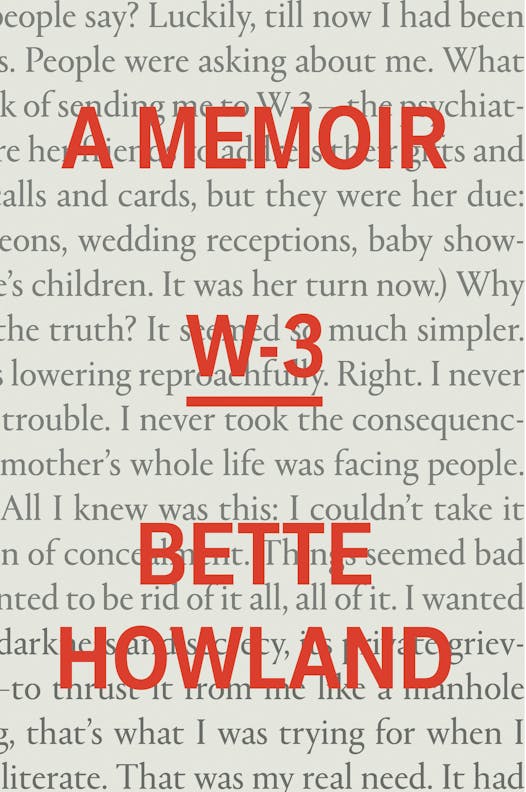Saul Bellow — an early champion of her remarkable literary talent — called Bette Howland "one of the most significant writers of her generation." In 1968, when Howland was 31 years old, raising two kids as a single mom on her librarian's salary, and staying at his apartment, she swallowed a bottle of pills in a suicide attempt that landed her in the psychiatric ward of a Chicago hospital.
Originally published in 1974, Howland's "W-3" is a slim, witty and uncompromising memoir of this event and this place, as well as their pivotal impact on her life as an author. "I wanted to abandon all this personal history — its darkness and secrecy, its private grievances, its well-licked sorrows and prides — to thrust it from me like a manhole cover," she explains of her mind-set at the time of her attempt.
That, she adds, was "what I hoped to obliterate." Instead, she took this experience's grim revelations and created this volume, her debut book, one that proved to be her personal and literary deliverance.
As Yiyun Li — who has written movingly of her own mental illness — notes in the introduction, "it can be read as an encyclopedia of life in a psychiatric ward, written from within a mental turmoil yet with preternatural omniscience." Li also serves as an editor of A Public Space, the Brooklyn-based publisher committed to bringing Howland's landmark work back into print, a project they began with "Calm Sea and Prosperous Voyage," a 2019 reissue of her best short stories.
Structured less as a self-portrait and more as a mosaic, Howland tells the stories of her fellow patients with astuteness and empathy. She contextualizes the late 1960s milieu — with its ubiquitous racism and misogyny — in which she and her peers had become ill and were now attempting to get well.
Calmly, coolly, she recounts the astonishing sexism of the medical profession that had dismissed her troubles: "After my first child was born, I had a howling postpartum depression and my husband sent me to a psychiatrist. After one session the psychiatrist told me (1) that I should watch television, 'it's a good outlet'; (2) the only reason I wanted to be a writer was to control other people; (3) the dream which troubled me so much — the spilled milk — was an obvious sexual fantasy."
Although Howland and the residents of W-3 are given to understand that their time in this institution will save them, Howland wryly punctures the myth that true salvation is within anyone's reach, sane or not. "The gist of all pep talks is that you can help yourself; you can straighten up, buckle down, fly right," she writes. "But what if there comes a moment when you can't? And that's the moment you have to be prepared for."
With its incisive humor and unsparing descriptions, "W-3" refuses a tidy resolution, instead showing how all the "clumsy, good intentions" in the world can't always provide a cure for the horror and tedium of losing one's mind.
Kathleen Rooney is the author of "Lillian Boxfish Takes a Walk" and "Cher Ami and Major Whittlesey."
W-3: A Memoir
By: Bette Howland.
Publisher: A Public Space, 224 pages, $26.

Summer Camp Guide: Find your best ones here

Lowertown St. Paul losing another restaurant as Dark Horse announces closing

Critics' picks: The 11 best things to hear, do and see in the Twin Cities this week

Critics' picks: The 9 best things to do and see in the Twin Cities this week



